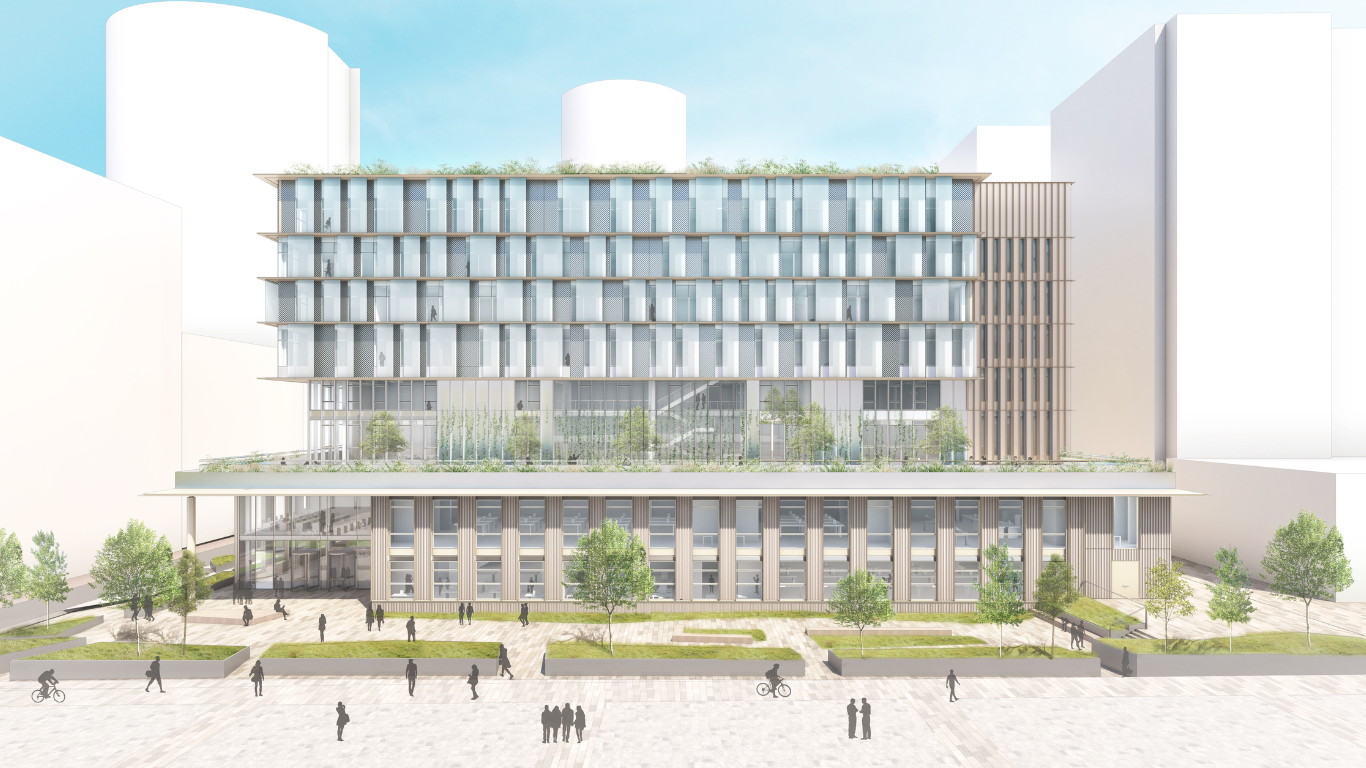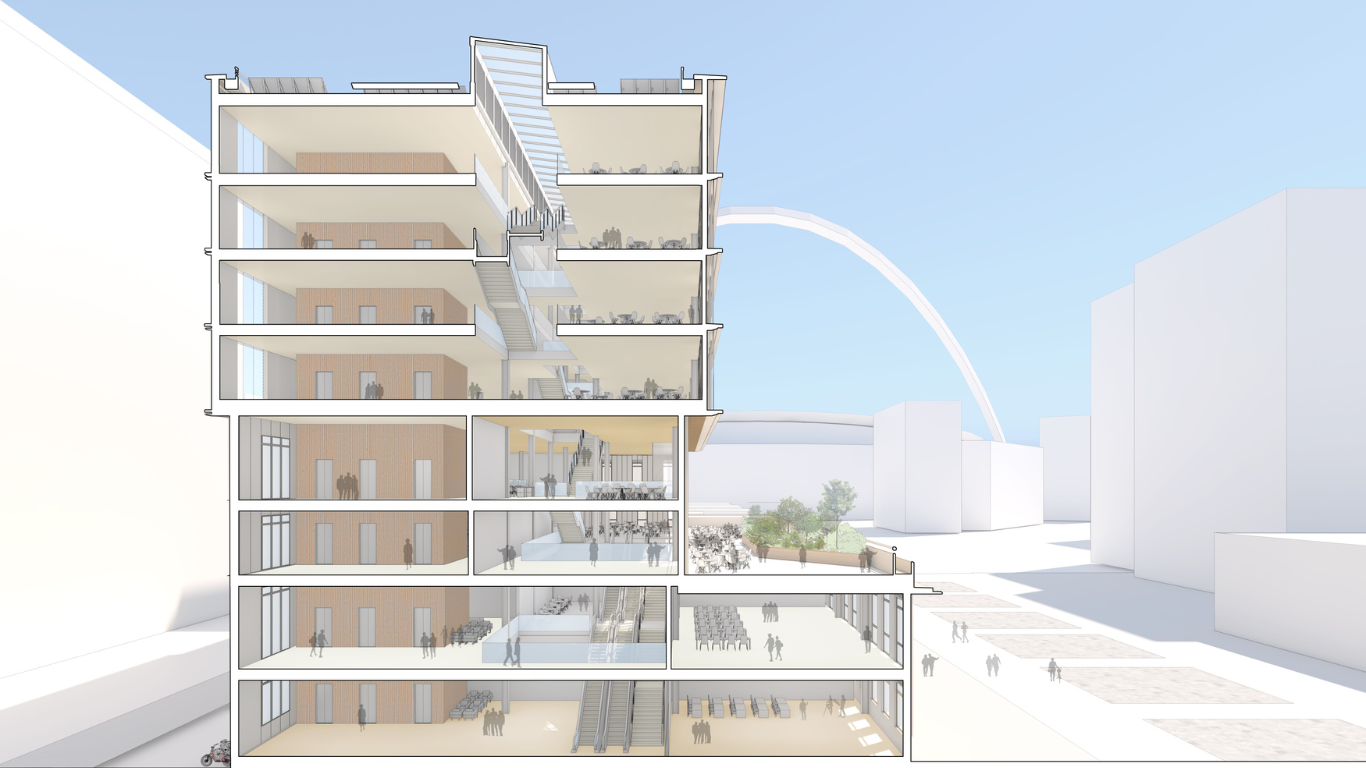United Colleges Group is undertaking an ambitious capital project, with plans for a new campus building on a prestigious site at Olympic Way in Wembley Park, moments away from Wembley Stadium.
The new College of North West London campus will provide state-of-the-art facilities and technology to support every element of students’ learning. The building is designed to deliver a modern curriculum in a supported, flexible environment for generations to come.
In the summer of 2025, United Colleges Group closed its existing Wembley Campus building in preparation for this exciting next step. The new development will address the accessibility and sustainability issues of the previous site, and will encourage young learners in Brent and beyond to continue their studies within the borough. Our ambition is for our new campus to be a vibrant hub for learning and the first choice for students across London pursuing further education.
The plans for the project were approved unanimously by Brent Council’s Planning Committee in December 2024. Further updates on the project timeline will be shared in due course.


The site for the new campus is located in Wembley within the London Borough of Brent, on Olympic Way, near to Wembley Stadium. The new building has been designed to be sustainable, flexible and adaptable to future needs, allowing for centres of specialism to train learners and meeting the needs of industry.
Key design features include a large atrium which will be central to the building, accessible from each floor. At level two there will be a horizontal break which will allow the central gathering area of the college to spill out onto a landscaped roof terrace. Throughout the building there will be modern teaching spaces and offices, and heavy-duty workshops and learning spaces are positioned at the base of the building.
Sustainability sits at the heart of our design for the new Wembley Campus. A number of key green principles will be used in the materials choice and design of the building, and the development aims to utilise renewables to generate as much power on site as possible, deliver urban greening (the incorporation of green spaces and elements into urban environments and infrastructure, such as streets, cities, roofs and walls) and biodiversity net gain.
.png?sfvrsn=3460236d_1)


Visualisations produced by WilkinsonEyre Architects for United Colleges Group.